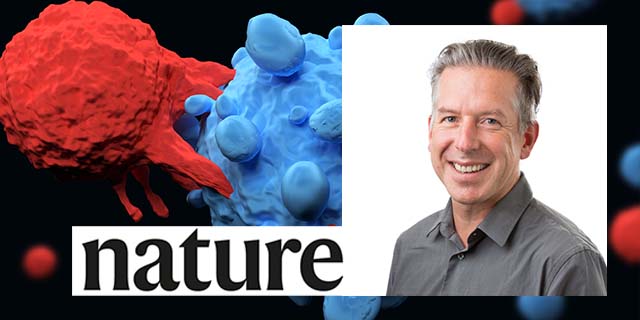Researchers uncover the key to maintaining immunity against chronic infection and cancer
Researchers in the Dept of Microbiology & Immunology have discovered a new population of immune cells which are critical in maintaining the immune response against chronic infections and cancer.
This new population of cells also mediates the response to immunotherapy using checkpoint inhibitors, which has revolutionised cancer therapy in recent years.
The discovery may explain why immunotherapy fails in some people and could lead to the development of more effective new therapies for cancer or severe viral infections.
It has long been known that severe diseases can damage our immune system. Known as immune exhaustion, it is a phenomenon often seen in cancer patients or patients living with chronic viral infections such as HIV or hepatitis that mainly affects an immune cell population called cytotoxic T cells, which play a critical role by killing cancer cells or cells infected by a virus.
Now researchers, led by Dr Carlson Tsui and Professor Axel Kallies (Department of Microbiology & Immunology in the Doherty Institute), together with Dr Lorenz Kretschmer and Dr Veit Buchholz from the Technical University of Munich (TUM), have identified a novel cell population that is critical in overcoming exhaustion and maintaining long-term T cell responses during chronic viral infection.
In previous studies, Professor Kallies’ team had demonstrated that not all T cells in chronic disease become exhausted and lose their function. So-called ‘precursors of exhausted T cells’ or Tpex cells, were able to maintain their function for a long period of time.
Dr Buchholz’s team had previously identified that certain memory T cell subsets had the stem-cell-like ability to self-renew, tracing immune responses derived from single T cells in vivo.
Dr Tsui, postdoctoral researcher in Professor Kallies’ laboratory and co-first author on the paper, explained that the new study, published today in Nature, combines the unique expertise of both labs, narrowing it down to a very specific subset of Tpex cells that harbour this stem-cell-like function.

The team have also been able to identify the key molecule which enables these cells to develop and function.
“We discovered a specific transcription factor, called Myb, that controls the development and function of these cells,” Professor Kallies said.
“Without this factor, this population of cells doesn’t form, and the T cells responding to the chronic infection cannot be maintained or respond to checkpoint inhibition - and immunotherapy fails.”
The researchers have proposed this new subset of cells to be called stem-like exhausted T cells.
“These cells act like stem-cells for the killer T cell population; they self-renew while also producing cytotoxic T cells that can kill virus infected cells,” said Dr Buchholz.
Both teams are now working on new strategies to utilise these cells and are hopeful that their research will lead to better therapies.
“Currently, immunotherapy is only successful in some cancers and only works for some patients. We are hopeful that our insights into the mechanisms of T cell invigoration may lead to the development of better targeted immunotherapies to improve outcomes in the context of viral infections and cancer," Professor Kallies explained.
This article was originally published by the Doherty Institute on 18 August.
About the Peter Doherty Institute for Infection and Immunity
The University of Melbourne and The Royal Melbourne Hospital have partnered to create the Peter Doherty Institute for Infection and Immunity (Doherty Institute) - a centre of excellence where leading scientists and clinicians collaborate to improve human health globally.